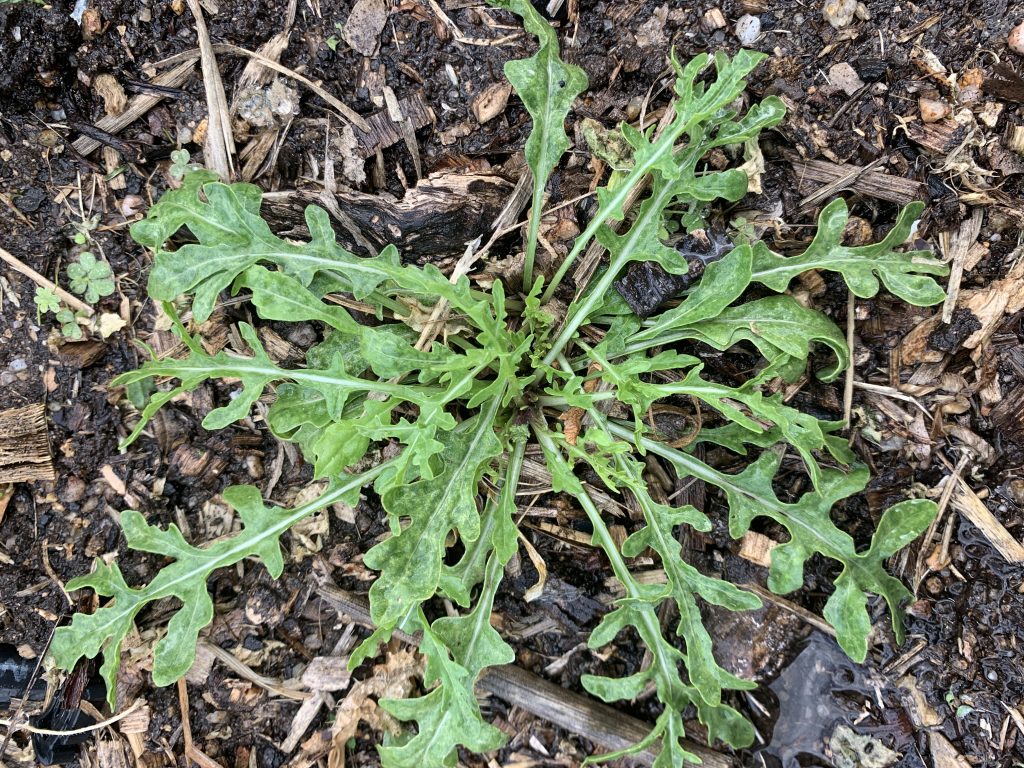Botanical name : Diplotaxis tenuifolia
Common name : Wild Rocket, Wild arugula
Easy for seed saving
Lifecycle: Perennial
Pollination: Insect pollinated
Mating system: Perfect flowers, self-incompatible
Suggested spacing: Allow enough space for plants to mature. At least 15cm.
Seed specific requirements: None
Isolation distance: None unless a specific strain then 250 m
Population size: 10 or more plants
Seed maturity: When pods turn brown and dry
Processing method: Dry threshing and winnowing
Expected seed viability: 5 years
Images

Growing for seed
Wild rocket is self-incompatible so a number of plants should be allowed to flower to together to ensure good cross-pollination and seed set.
Plants form dense, low shrubby growth as they mature. Spacing them at least 30cm apart will permit each plant to grow to it’s potential before flowering. Flowers are small and yellow and prolific. It does not cross-pollinate with broad leaf rocket, which has white flowers.
Selection
There are few named strains of wild rocket in Australia. Selection is focused on healthy, disease-free plants.
Harvest
As wild rocket flowers continuously over a long period so pods at different stages of maturity will occur on the same stem. The pods shatter easily so stems should be harvested promptly as soon as the pods start to turn light brown.
Processing
After harvesting keep cut stems in a bag or on a tarp. The fine plant material usually dries in about a week. Seed may shatter during drying. Any unopened pods are easily processes by rubbing along the stem with a gloved hand or walking on larger quantities of plant material.
Sieving and winnowing is effective at removing unwanted plant material to leave clean seeds.
Contributors
Liz Worth, Nellie Pryke
